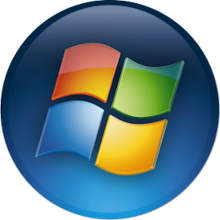Computers are made of different parts, with each part having many different functions. One of these parts is the Windows Registry. It is a system for storing important data for booting and operating the computer. It can be called a binary data tree used to store information that Windows and Windows programs use. The information of the configuration of all programs is available at the Registry which is fast and secure. With the Registry, programs don’t need to implement their own system for information storage. Writing a program, storage and backup becomes easier with the Registry.
As we understand, the Registry was implemented in the 95 Windows release. In Windows 3.1 version, the Registry was a single file for managing mostly Microsoft products. Programs were available for ‘object linking and embedding’. This helped programs share object classes or enabled them to communicate with one another. It also enables file associations. This registry was named reg.dat and was available in the Windows folder. There were four versions that used reg.dat file. The registry was recast in Windows 95, by replacing the INI filing system
The Windows Registry 101 is the mini-library of the computer. It helps to organize the configurations and settings whenever software and hardware installation take place. The Registry is like a reference book to which Windows turns to consult on hardware, software and user profiles. The registry records all modifications made from file associations, system settings or installed programs. When you add new programs or uninstall new one, it is automatically detected by the registry.
The Windows Registry has a tree like hierarchy. It has a KEY/SUBKEY/VALUE structure.
The main roots of the structure are six and are:
 HKEY_CLASSES_ROOT
HKEY_CLASSES_ROOT
 HKEY_USERS
HKEY_USERS
 HKEY_CURRENT_USER
HKEY_CURRENT_USER
 HKEY_DYN_DATA
HKEY_DYN_DATA
 HKEY_LOCAL_MACHINE
HKEY_LOCAL_MACHINE
 HKEY_CURRENT_CONFIG
HKEY_CURRENT_CONFIG
The registry is available on the hard disk in the System.dat and User.dat files. The former has information on the computer and the hardware while the latter has information on particular users.
HKEY is the short form for the phrase ‘handle to a key’. While ostensibly there are 6 keys, however there are two real keys namely HKEY_LOCAL_MACHINE and HKEY_USERS. The remaining keys are like shortcuts.
HKEY-CLASSES_ROOT has data on file extensions like .doc, .txt, .exe etc. It also carries information on COM class registration like IIDs, ProgIDs and CLSIDS. This is to ensure compatibility of this root with registry in Windows.
HKEY_USERS has all the information on applications settings and preferences.
HKEY_CURRENT_USER stored data for the user who has currently logged in. It obtains information from HKEY_USERS key each time the user logs in.
HKEY_DYN_DATA stores data on the current devices used. It updates every time the computer restarts. Technically, it is not a key in the real sense of the term.
HKEY_CLASSES_ROOT, HKEY_LOCAL_MACHINE and HKEY_CURRENT_USER, help to view data simultaneously.
HKEY_LOCAL_MACHINE is the storage place for all data for a particular computer.
There is a subkey called HKEY_USER\DEFAULT where all the default system settings are stored. A new subkey is created when a new user profile is created. The next time, this user logs in, the relevant data is pulled up and referenced in the key HKEY_CURRENT_USER key.
Multiple hardware configuration and Plug and play device settings are dealt by the key HKEY_CURRENT_CONFIG.
The key HKEY_DYN_DATA is a actually a dynamic file system that stores settings during every new session.
The Windows registry needs to be scanned regularly to help your computer function smoothly.



 HKEY_CLASSES_ROOT
HKEY_CLASSES_ROOT


